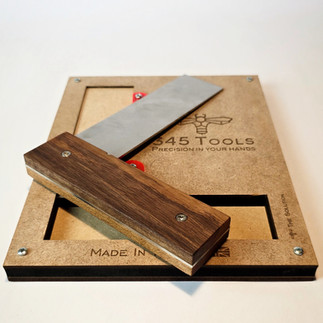Carpenter’s Square vs Engineer’s Square: Which One Do You Actually Need?
- Joshua Anders
- Sep 1
- 2 min read
Walk into any tool shop and you’ll see two squares that look similar but serve very different purposes: the carpenter’s square and the engineer’s square.
So which one should you actually buy? Let’s clear up the confusion.
What is a Carpenter’s Square?
A carpenter’s square is designed for woodworking.
Lightweight and practical for marking and layout.
Usually longer than an engineer’s square.
Built for tasks like checking cuts, squaring fences, and marking joints.
In short, it’s the tool you’ll reach for daily in the workshop when working with timber.
What is an Engineer’s Square?
An engineer’s square is designed for metalworking and inspection.
Made to extremely tight tolerances.
Shorter and heavier than a carpenter’s square.
Often used for checking machinery parts, not laying out timber.
It’s highly accurate, but not practical for everyday joinery.
Which One Should You Choose?
Here’s the key:
If you’re primarily working with wood, you need a carpenter’s square.
If you’re in precision engineering or machining, you’ll use an engineer’s square.
That said, there’s no reason a carpenter’s square can’t be made to engineer-level accuracy. That’s where the best of both worlds comes in.
The 345 Tools Square: Accuracy Meets Practicality
When I designed the 345 Tools Carpenter’s Square, the goal was simple: create a square that’s as accurate as an engineer’s, but built for the daily reality of woodworking.
2mm stainless steel blade — precision cut and dead square.
Hardwood scales — comfortable, durable, and warm in the hand.
Specialist ceramic coating — protects without hiding the natural beauty.
Made in Cambridgeshire — small batch, carefully finished.
So you get the accuracy of an engineer’s square with the practicality of a carpenter’s square.
Final Thoughts
If you’re a woodworker, you don’t need a drawer full of inspection tools. You need one square that you can trust every single day.
A square that’s built to be used, built to last, and built to be passed down.

















